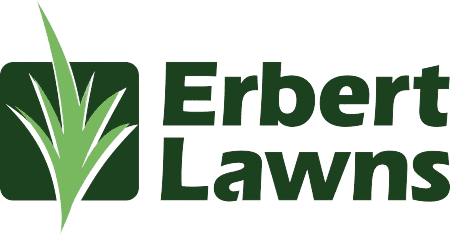By Barbara Powell
You’ve mowed, you’ve fertilized and you’ve watered. Or you have paid a lawn service to do these things for you. You’re on top of your yard work, right? Your dreams of healthy, thick, greener grass are well within reach!
But wait.
You’ve heard or you already know: You’re supposed to aerate your lawn, especially with the particular soil found in Denver and its suburbs.
But what is lawn aeration, and what does it do for your lawn? A great question is a liquid aeration vs core aeration?
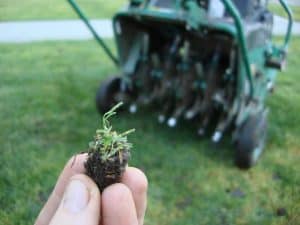
What is Aerating and Why Should You Care?
The purpose of aeration is to open up and loosen the subsoil, allowing air, water, and nutrients to penetrate deep into the soil—around and below the existing grass root structure. It also gives roots the space to grow, and the right environment in which to thrive.
This also promotes the development of healthy topsoil—known as humus—increasing the richness of the soil. Aeration is about more than just creating airways in the dirt. It improves the quality of the soil.
Remember: The health of your lawn depends on the health of your soil. The deeper and stronger the roots of your grass, the healthier and greener your grass will be.
Which will pose the debate of liquid aeration vs core aeration. Which of these will give you the best desired result?
When Should I Aerate?
In the Denver area, your lawn can be aerated at any time the ground is not frozen, but should not be done when it is extremely hot and dry. Spring and fall are considered the best times for aeration. Many professionals in Denver and surrounding areas, for example, recommend that you do not aerate in the summer at all. It is best to wait until the cooler weather in spring or fall when the soil is more moist.
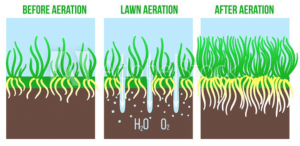
Some factors that can affect the frequency of your lawn’s need for aeration:
- Heavy lawn traffic (kids, adults, dogs, lawnmowers, etc.)
- Lawns at new construction sites
- Soil layering from sod
- Too much thatch (organic material on the topsoil)
- The soil in your yard is compacted
- A year or more has passed since you last aerated
Symptoms your may notice when your lawn needs aeration:
- Water pools on the lawn after watering or rainfall
- Water retention is low; most of the water is running off your lawn
- There are worn areas in your lawn
- Your lawn has a lot of thatch built up
The topsoil should contain a lot of organic material. It should have a rich, dark brown color and feel soft and porous in your hands. The porous texture is necessary for drainage and to allow the soil to hold air and water.
In addition, when the layer of thatch on your topsoil that is more than about ¼” deep, you have too much thatch. It will begin to block water and nutrients from getting into the soil. Aeration can help.
When you dig deeper and reach the subsoil, you find harder, more compact dirt. In and near Denver, it is more clay-like and typically lighter in color. Root systems are less likely to thrive in this type of soil.

What’s the Best Way to Aerate My Lawn?
This is where we begin the discussion of liquid aeration vs core aeration? For a better understanding, let’s explain how each aeration is done.
Until recently, aerating your lawn usually involved paying technicians to bring large equipment to drill multiple holes throughout the lawn once or twice a year, and pull out dirt “plugs” or “cores.” This leaves both holes and dirt plugs on your lawn until the two naturally adjust and the dirt plugs become part of the soil again.
You can use spike aeration instead, which is similar in that it uses equipment to manually poke holes into the lawn. Spike aeration does not pull out dirt plugs like core aeration.
Unfortunately, these traditional “dry” aeration methods don’t always work as effectively as you might think. Wide spacing between relatively large soil cores or spikes isn’t the optimal recipe for reduced soil compaction and increased absorption.
More recently, liquid aeration has been gaining popularity. Liquid aeration provides coverage for your entire lawn, while a manual aerator is limited to the holes it makes. Without the need for holes, liquid aeration can be done any time of the year without damaging new grass as the core would.
Liquid aeration allows every spot—on a microscopic level—to be more permeable and soak up everything it needs. It does so without creating any “plugs” on the ground.
You can hire professionals to perform any of these methods of aeration. You can also choose to buy or rent the equipment you need and aerate your lawn yourself.
DIY Pros and Cons of Liquid Aeration Vs Core Aeration
You can accomplish any of these methods of aeration on your own lawn with the right equipment and knowledge. Keep in mind, however, that if you are new to aerating or lawn care, you will likely need a few tries to get it right. That’s extra money and your precious time, so please consider all aspects of what you’re taking on before you start!
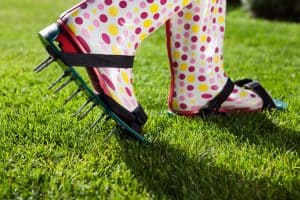
You can purchase hand held aerators—core or spike—for less than $50. Manual coring machines cost a little more for a half-day rental.
Self-propelled coring machines are also available at a higher cost.
If you want to use liquid aeration, there are a few such products on the market. The same main ingredients are found in any good liquid aeration product.
First, some sort of wetting agent is needed to get the materials deep into the soil. A wetting agent can be made from natural materials like the yucca plant, or from a more synthetic soap-like material. Either is probably fine. Secondly, the product should contain food for microbial life, typically humates and sometimes kelp. Finally, a good liquid aeration product should contain enzymes or bacteria that are specifically designed to break down thatch. Sometimes the thatch decomposition product is in a separate package and requires its own application.
While liquid aeration sounds straightforward enough—you probably already have a garden hose—there is a lot of biology involved. If you are not experienced and don’t fully understand how the plants, soil and biology of the lawn’s ecosystem work together, you can end up doing further damage rather than accomplishing a greener lawn.
Core Aeration Tips
If you choose to do core aeration (yourself or through a lawn service), here are some tips to get the most value out of it. Importantly, don’t forget to mark your sprinklers and other underground systems before starting core aeration!
(Source: https://planttalk.colostate.edu/topics/lawns/1559-proper-lawn-aeration/)
- Water your lawn a couple days prior to the aeration event. In order to pull deep plugs, the lawn should have good moisture. If the lawn is too dry, the plugs pulled will be very short or the machine will simply bounce across the surface.
- Before you start aeration, mark your sprinkler heads. It’s very easy to hit a sprinkler head with the machine. The aeration machine generally has one speed–fast–and they aren’t very easy to maneuver.
- The goal of aeration is to “Swiss cheese” the lawn–make as many aeration holes as possible. Up, down, back and forth, horizontally, vertically, diagonally. Try to get the holes on 2″ centers. If the plugs are 2-3″ deep, this is also excellent. This is where commercial aeration may fall short if they only make one pass. One pass tends to result in very few holes several inches apart and does little to improve the health of your turf.
- If you rent equipment, you have the luxury of being able to control how many passes you make. Honestly, you can’t make too many holes—the more holes the better!
- Leave the cores on the lawn once you’re finished. They are full of wonderful organic matter. If you leave the cores, they will break down with a few mowings. If you prefer to rake them up, put them in your compost pile–don’t throw them away.
Do you need to fertilize?
Need to seed or fertilize? Do so following aeration. The holes you just created are ideal “germination chambers” for seed. Seeds that fall into the holes will stay moist, enjoy good contact with soil, and be protected during germination.
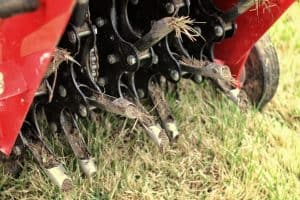
Fertilizer will also reach turf roots better following aeration (be sure to water it in). On a side note, if you applied crabgrass preventer to your lawn in spring, wait until August to seed–the crabgrass preventer will kill seedling grass.
Proper coring also leaves the plugs on the lawn, which is important. Some people might find the soil cores of mechanical core aeration unsightly, but they do serve a purpose. They’ll break down soon enough on their own and they act as topdressing, whether you are planning to seed or not.
Why Choose Liquid Aeration Vs Core Aeration?
As mentioned, liquid aerators are better for the soil. The active ingredient creates channels in the soil that help deliver essential nutrients to the root systems of grass, trees, shrubs, and other plant life.
The bottom line is that you get richer soil and a healthier lawn for a fraction of the cost, energy, and effort.
We recommend using a lawn service to apply the liquid aeration, as they will offer reliable professional equipment, the right (tested and proven) aeration mix in the right amount, and plenty of experience. You will get better results with professionals, and they will be available afterwards to answer your questions and help you to continue to achieve a healthier lawn and greener grass—without costly mistakes.
While the aeration starts working immediately, you should start noticing positive results within a couple of weeks. However, repeated applications allow the solution to continue working.
Denser soils, such as clay soils, may require additional applications. Notably, liquid soil aerators can be used throughout the year, unlike manual aerators. That is another of the many benefits of choosing a liquid solution over manual coring.
Unlike some fertilizers and lawn conditioners, you do not need to worry about breathing in harmful chemicals after your yard has been sprayed. The liquid aerator is also safe for people and pets. After allowing the solution to settle, you do not need to wait hours before allowing your dogs or children in the backyard.
Advantages of liquid aeration treatment—for your lawn:
- Soil Compaction Reduction: Instead of poking a relatively small number of larger holes, liquid aeration opens up countless tiny holes throughout the soil.
- Water Retention: Because the soil absorbs more effectively after liquid aeration, it retains and distributes water to the places that need it most.
- Water Savings: Liquid aeration allows your soil to hold water more effectively than ever. It doesn’t dry out as quickly, which means you can water less frequently. This is particularly important in certain geographic areas—such as Denver metro—that are drought-prone or have watering restrictions.
- Healthier Grass Roots: Reduced soil compaction allows the roots of your lawn to grow deeper and stronger.
- Safety and Eco-Friendliness: Liquid aeration introduces only biodegradable materials to your lawn. It’s also safe to use around children and pets.
Advantages of liquid aeration treatment—for YOU:
- No plugs all over your lawn. The dirt plugs can be an eyesore, and you and your pets track that dirt into the house.
- If your lawn service uses sea kelp in their mix, it will help you have greener grass faster while encouraging deeper roots. (Ask your aeration service if they mix sea kelp into their liquid aeration products.)
- Won’t damage anything under ground, including sprinkler system, invisible pet fencing, cable lines.
- If you plan to DIY, liquid aeration provides a simpler way to aerate your lawn without the hassle of heavy manual coring machines.
Note that these products should not be confused with high-pressure water injection systems used for “coreless” aeration on golf courses. It is possible that some lawn care companies might offer this highly effective (but expensive) type of aeration as an alternative to conventional core aeration.
Make Your Choice!
We’ve covered the various ways to aerate your lawn, along with the advantages and disadvantages of both. Whether deciding liquid aeration vs core aeration, make sure you don’t get behind in your lawn aerating. Your greener grass will thank you!
At Erbert Lawns we provide lawn care services in the Denver metro area including the following suburbs: Littleton, Roxborough, Castle Rock, Highlands Ranch, Englewood, Centennial, Parker, Aurora, Commerce City, and Thornton Colorado. We offer the following lawn services: Fertilization and Weed Control, Aeration, Weed Kill in the Rock & Mulch Beds, Aeration with Over Seeding, Revive, Lawn Disease Treatments, Perimeter Pest Control and Winter Mite Treatments.
Want to see about how much it cost to have professional lawn care for you home? Just click on the link below.
